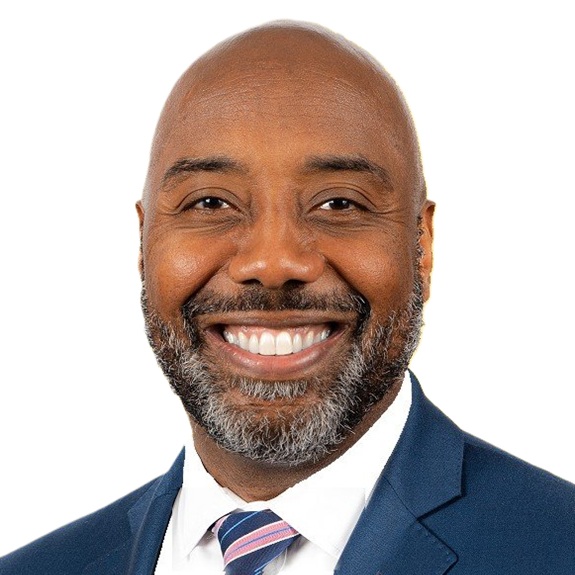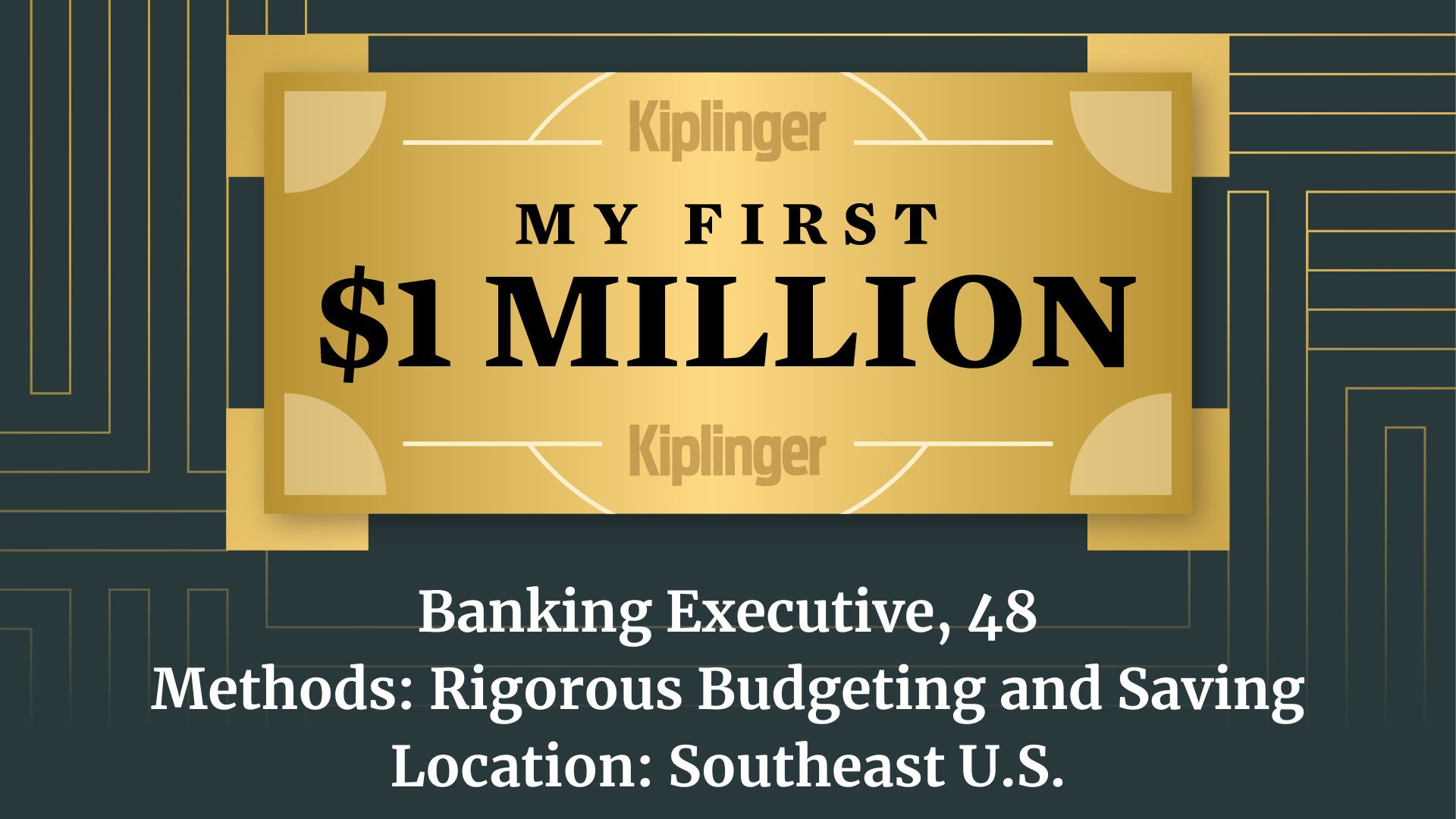Four Ways to Navigate the Bumps of Today’s Volatile Market
Adjusting investment strategies is a smart move, and so is making those financial decisions based on long-term optics rather than short-term fears.


Between mixed earnings reports, slowing economic growth and banking-sector turmoil, the markets are more uncertain than they have been in years — and so are Americans watching the value of their retirement plans and investment portfolios drop day after day.
To staunch the bleeding, many investors are switching up their strategies. A recent survey by global consulting firm EY found that nearly three-quarters of respondents changed investment behavior due to a decline in portfolio value. But not every investor is money-savvy — and many are making long-term financial decisions driven by short-term fears that could cause them more harm than good.
Here are four ways investors can navigate the ups and downs of the volatile market.
From just $107.88 $24.99 for Kiplinger Personal Finance
Become a smarter, better informed investor. Subscribe from just $107.88 $24.99, plus get up to 4 Special Issues

Sign up for Kiplinger’s Free Newsletters
Profit and prosper with the best of expert advice on investing, taxes, retirement, personal finance and more - straight to your e-mail.
Profit and prosper with the best of expert advice - straight to your e-mail.
1. Diversifying your portfolio: Asset location.
Take a look at your investments to make sure you have your portfolio diversified across the three tax buckets.
Imagine your retirement fund as a stool with three legs. Each leg represents a different type of savings vehicle — taxable, tax-deferred or tax-exempt investments — and all are necessary for supporting a sustainable retirement over the long haul.
Now, while it’s certainly possible to balance on a seat with two legs, it isn’t comfortable or stable — just as a portfolio with only a 401(k) (tax-deferred) and an investment account (taxable) will compound losses from volatility by added leakage based on tax costs. And if that stool only has one leg (i.e., 401(k) only), it’s likely to fall over at the slightest shift — and bring you down along with it. Often, investors have the tax-deferred and taxable bucket in place.
But a gap many people have in their financial plans is that third leg — tax-exempt investments, which include Roth IRAs, Roth 401(k)s, cash-value life insurance or municipal bonds in their resident state. The value add of these investment vehicles is tremendous, because you get every dollar you put in, rather than having to share it with federal and state governments. That can go a long way toward extending your retirement years and minimizing the impact of losses from volatility.
2. Lean into dividend-paying stocks.
Not all stocks are the same, and dividend-paying stocks with a history of reliable dividend growth may help hedge against the valleys and peaks of the S&P 500.
That’s because dividend-paying stocks offer investors regular payments, which can act as a buffer against losses when stock prices struggle. And the consistent, dependable cash flow from these dividends often incentivizes shareholders to hold on to them in a bear market.
The relative stability of these stocks also makes them attractive long-term investment vehicles. For example, the Dividend Aristocrats are companies in the S&P that have increased their payouts annually over a 25-year period.
However, there a few caveats. Dividends are not guaranteed — a company can stop paying dividends, and/or the company itself could experience bankruptcy. Another risk is that dividends are not likely to increase sufficiently over time to keep pace with inflation. Over a 30-year retirement time horizon, this means your dollars may buy less and less, eroding your ability to maintain your lifestyle through retirement.
3. Develop an after-retirement financial plan.
Think of your investment strategy for retirement like climbing Mount Everest — it’s a staggering feat, requiring a lot of long-range planning. But so many people focus on reaching the summit that they don’t prepare adequately for the descent — which is often even more treacherous.
In a similar sense, many people spend decades focused on saving for retirement to hit their financial targets, but leave their post-retirement financial strategy as an afterthought.
Investors should instead develop a long-term plan that follows them through life expectancy, rather than stopping short when they hit retirement age. Having a long-term plan based on a reasonable rate of return (i.e., 6%) can also assuage fears over short-term market trends by putting gains and losses into perspective.
Start by separating your post-retirement lifestyle expenses into three categories: expenses related to potential emergencies (roof replacement, car maintenance, etc.); fixed, recurring monthly expenses (real estate taxes, medical premiums, groceries, etc.); and expenses that may vary from month to month (vacation, dining out, etc.). The next step is to categorize your investments and assets to match each category of expenses.
When it comes to the emergency expense bucket, set aside some of your assets and keep them in cash or investments that can quickly be converted to cash to cover unexpected needs.
Your fixed, recurring expenses would be covered by Social Security or pension benefits, if available. If Social Security or pension benefits are not available or not sufficient to cover the expenses, you could set aside a portion of your nest egg to create the needed income using dividend-paying stocks, bonds and/or annuities. Many investors use the guarantee features of annuities to match against the fixed expenses.
Finally, the remaining amount of your nest egg could be dedicated to covering variable expenses such as travel costs. Often, retirees find that by going from no time for leisure to heaps of it can inflate vacation spending by tens of thousands of dollars.
4. Reduce your sequence of returns risk.
Timing is everything, and the same goes for people near retirement who are ready to take withdrawals. The order of those withdrawals is called your sequence of returns, which has the potential to shape your retirement for the better — or for the worse.
The big problem is that market declines in the early years of retirement, paired with large withdrawals, could have a negative compounding effect, significantly reducing the longevity of your nest egg — sometimes by up to a decade.
A potential way to ride out that volatility is to consider structured notes, variable annuities and fixed annuities — tax-deferred investment accounts that guarantee a source of lifetime income and aren’t always tied to the ups and downs of the stock market. Some indexed options enable you to take advantage of market gains while protecting you from a significant portion of loss, sometimes up to 30%.
Playing the long game
While adjusting investment strategies in response to volatility is a smart move, investors need to make those financial decisions based on long-term optics. If they play their cards right, today’s volatile marketplace could be just another speed bump on the road to a long-lasting retirement.
This article has been obtained from an outside source and is provided as a courtesy by Stephen B. Dunbar III, JD, CLU, Executive Vice President of the Georgia Alabama Gulf Coast Branch. Equitable Advisors and Equitable Network do not offer legal or tax advice and make no representation as to the accuracy or completeness of this information. You should consult your own legal and tax advisors regarding your particular circumstance. Stephen Dunbar offers securities through Equitable Advisors, LLC (NY, NY 212-314-4600), member FINRA, SIPC (Equitable Financial Advisors in MI & TN). Annuity and insurance products offered through Equitable Network, LLC. Equitable Network conducts business in CA as Equitable Network Insurance Agency of California, LLC, in UT as Equitable Network Insurance Agency of Utah, LLC, in PR as Equitable Network of Puerto Rico, Inc. GE-5758109.1 (6/23)(Exp. 6/25)
Profit and prosper with the best of Kiplinger's advice on investing, taxes, retirement, personal finance and much more. Delivered daily. Enter your email in the box and click Sign Me Up.

Stephen Dunbar, Executive Vice President of Equitable Advisors’ Georgia, Alabama, Gulf Coast Branch, has built a thriving financial services practice where he empowers others to make informed financial decisions and take charge of their future. Dunbar oversees a territory that includes Georgia, Alabama and Florida. He is also committed to the growth and success of more than 70 financial advisers. He is passionate about helping people align their finances with their values, improve financial decision-making and decrease financial stress to build the legacy they want for future generations.
-
 How to Safely Open an Online Savings Account
How to Safely Open an Online Savings AccountOnline banks offer generous APYs that most brick-and-mortar banks can't match. If you want to make the switch to online but have been hesitant, I'll show you how to do it safely.
-
 7 Ways to Age Gracefully Like the Best Stock Photo Seniors
7 Ways to Age Gracefully Like the Best Stock Photo SeniorsAs a retirement editor, I've gleaned valuable wisdom (and a lot of laughs) from one older couple that tops the seniors' stock photo charts.
-
 My First $1 Million: Banking Executive, 48, Southeast U.S.
My First $1 Million: Banking Executive, 48, Southeast U.S.Ever wonder how someone who's made a million dollars or more did it? Kiplinger's My First $1 Million series uncovers the answers.
-
 Time to Close the Books on 2025: Don't Start the New Year Without First Making These Money Moves
Time to Close the Books on 2025: Don't Start the New Year Without First Making These Money MovesAs 2025 draws to a close, take time to review your finances, maximize tax efficiency and align your goals for 2026 with the changing financial landscape.
-
 Is Fear Blocking Your Desire to Retire Abroad? What to Know to Turn Fear Into Freedom
Is Fear Blocking Your Desire to Retire Abroad? What to Know to Turn Fear Into FreedomCareful planning encompassing location, income, health care and visa paperwork can make it all manageable. A financial planner lays it all out.
-
 How to Master the Retirement Income Trinity: Cash Flow, Longevity Risk and Tax Efficiency
How to Master the Retirement Income Trinity: Cash Flow, Longevity Risk and Tax EfficiencyRetirement income planning is essential for your peace of mind — it can help you maintain your lifestyle and ease your worries that you'll run out of money.
-
 I'm an Insurance Expert: Sure, There's Always Tomorrow to Report Your Claim, But Procrastination Could Cost You
I'm an Insurance Expert: Sure, There's Always Tomorrow to Report Your Claim, But Procrastination Could Cost YouThe longer you wait to file an insurance claim, the bigger the problem could get — and the more leverage you're giving your insurer to deny it.
-
 Could a Cash Balance Plan Be Your Key to a Wealthy Retirement?
Could a Cash Balance Plan Be Your Key to a Wealthy Retirement?Cash balance plans have plenty of benefits for small-business owners. For starters, they can supercharge retirement savings and slash taxes. Should you opt in?
-
 7 Retirement Planning Trends in 2025: What They Mean for Your Wealth in 2026
7 Retirement Planning Trends in 2025: What They Mean for Your Wealth in 2026From government shutdowns to market swings, the past 12 months have been nothing if not eventful. The key trends can help you improve your own financial plan.
-
 What Defines Wealth: Soul or Silver? Good King Wenceslas' Enduring Legacy in the Snow
What Defines Wealth: Soul or Silver? Good King Wenceslas' Enduring Legacy in the SnowThe tale of Good King Wenceslas shows that true wealth is built through generosity, relationships and the courage to act kindly no matter what.
-
 An Investing Pro's 5 Moves to Help Ensure 2025's Banner Year in the Markets Continues to Work Hard for You in 2026
An Investing Pro's 5 Moves to Help Ensure 2025's Banner Year in the Markets Continues to Work Hard for You in 2026After a strong 2025 in the stock market, be strategic by rebalancing, re-investing with a clear purpose and keeping a disciplined focus on your long-term goals.